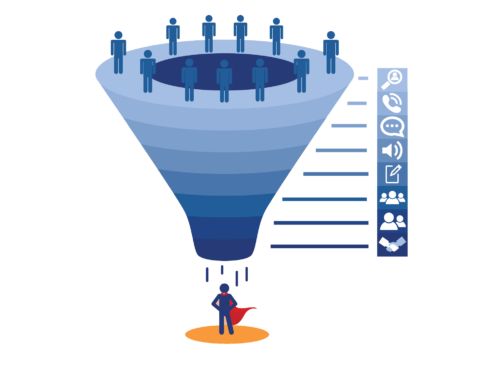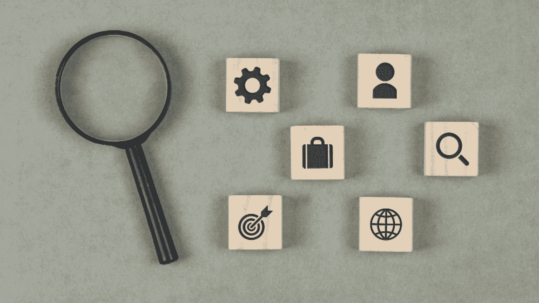
Today, if you are a recruiter and don’t see yourself as a marketer, you are in the wrong profession. The modern recruitment market demands recruiters to be good at marketing and sales. Although their jobs are different from their friends in sales and marketing, their end goal is to attract, convert and successfully close leads. Hence, recruiting professionals to use a step-by-step funnel in the recruitment process, like the marketing teams use the sales funnel. The exact sales funnel methodology and strategies apply to the recruitment funnel and help recruiters source, vet, and hire candidates successfully.
With the importance of recruitment in companies, the popularity of the recruitment funnel concept is also growing. This ultimate guide to the recruitment funnel discusses the steps involved in it.
What is a Recruitment Funnel?
The recruitment funnel is not much different from the sales funnel. The recruiting funnel is applied to candidates, whereas a sales funnel is all about customers.
The recruitment funnel is a framework that defines the recruitment process from start to finish. The funnel narrows down after each step until a hiring decision is made. Depending on your company’s hiring strategies and the complexity of your recruitment process, there can be a different number of stages in the recruiting funnel.
Why is Recruitment Funnel Important?
The ultimate goal of the recruitment funnel is to attract, nurture and hire top talent. Recruiting funnel can help you:
1. Break down the recruiting process into multiple stages, each with its own tactics and goals.
2. Assign these stages as tasks to dedicated members of the recruiting team.
3. Focus on each stage of the funnel and ensure candidate engagement throughout the recruitment journey.
4. Boost the speed and efficiency of the recruitment process by easily avoiding the strategies and channels that are not working.
Now, let’s look at different steps in the recruitment funnel.

A Complete Recruitment Funnel Guide
What are Different Stages of Recruitment Funnel?
As mentioned, there can be any number of stages between five to eight in recruiting funnels. A typical recruitment funnel would include the following stages.
- Awareness
- Attraction
- Application
- Pre-screening
- Interviewing
- Hiring
Let’s see the key activities and metrics included in the recruiting funnel.
1. Awareness
Awareness is the first phase of the recruitment funnel. The main goal of this phase is to get candidates’ attention and build your employer brand. This helps them understand that you’re a potential employer.
You need to first optimize your employer brand by creating useful content for your careers site, job posts, descriptions, and social media to create awareness among candidates.
Social engagement plays a key role in promoting your brand. So, interact with target candidates, join conversations and showcase your company’s values and culture on potential social channels.
The other best way to build an employer brand is to build relationships with the passive candidates through networking events or wherever possible. Even if they are not interested in moving now, you already have them in your candidate pool.
The key metrics of the awareness stage are:
- Get visitors to your website or careers page
- Grow engagement on your social media posts
- Interact with more candidates.
2. Attraction
The next step is to promote your employer brand to a higher level and focus on closing the current job openings. This phase demands more hands-on work as recruiters write compelling job descriptions and ads to advertise the openings.
Recruiters need to entice more target candidates to apply for the job by understanding what an ideal candidate wants and looks for in an employer. Writing clear and engaging job descriptions accordingly helps the recruiting team attract more target candidates.
The key metrics of the attraction stage are:
- A study shows a career site can convert 11% of visitors into applicants. By properly managing the attraction step, recruiters can turn career site visitors into their applicants.
3. Application
Now comes the application phase. This phase defines how your team performed in the above two stages. In this step, candidates apply for the job and enter the application process. To keep these applicants throughout the process, you need to ensure the application process is easy and quick. A study shows that 60% of job seekers quit in the middle of filling out online application forms due to lengthy or complex processes.
To ensure a successful and seamless application for your candidates, optimize the process for mobile devices. Automate follow-up emails to ensure they complete the application process. Incorporating this into your recruitment funnel with an ATS makes the application phase smooth and simple.
The key metrics of the application stage are:
- You can get an idea of the total number of applicants for a job post and entry rate versus the application complete rate. Knowing the average number of applicants per job posting helps you rethink your hiring strategy.
4. Pre-screening
The pre-screening phase is the first stage of the selection process, where you flag qualified candidates and shortlist them for the next step. In this phase, recruiters analyze the resumes to roll out profiles that do not meet the minimum requirements for the job. The manual screening takes a lot of time; hence, using an ATS will be smart.
In this phase, recruiters need to communicate with candidates about their application status and guide the shortlisted candidates for further steps.
The key metrics of the pre-screening stage are:
- Total applicants vs. shortlisted candidates. This shows how effective is your job description.
- Total applicants vs. interview rate. This shows how many people showed up for the interview and your follow-up strategy’s effectiveness.
5. Interviewing
The interviewing stage is the most critical phase of the recruiting funnel. This phase includes one or more rounds of interviews with a recruiter, a hiring manager, team members, and senior management.
This phase needs a collaborative hiring process in assessing the candidates and selecting the best ones.
The key metrics of the interviewing stage are:
- The number of interviews a candidate takes. The lesser, the better.
- Interviews to offer conversion rate.
6. Hiring
Hiring is the final stage of the recruiting funnel. You select a candidate to extend an offer and negotiate on terms as required in this stage. This stage may actually be longer or more difficult than it sounds. You need to check if the candidate signs the offer or already has another job on the table and negotiate accordingly.
The key metrics of the interviewing stage are:
- Offer acceptance rate.
Bottom Line
So, these are the standard stages of a recruitment funnel. As you see, each stage has its own challenges, goals, and metrics, which make the entire recruiting process easy and efficient. Recruitment funnels are a powerful tool to save time and hire quality candidates for your company. However, you must pay close attention to each step and wisely incorporate an ATS to make your recruitment easier and improve ROI in each stage.
To receive and stay updated about related content:





